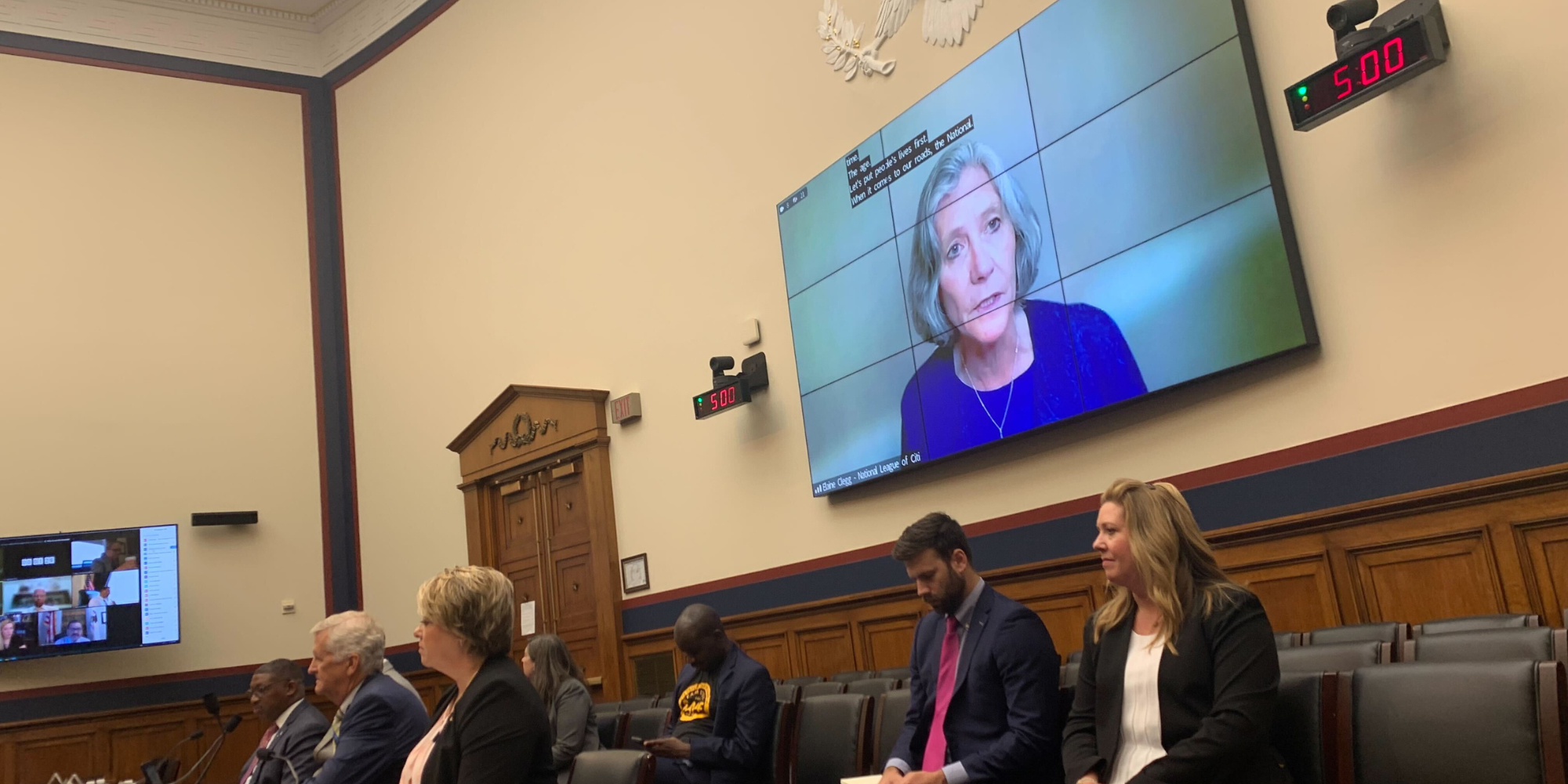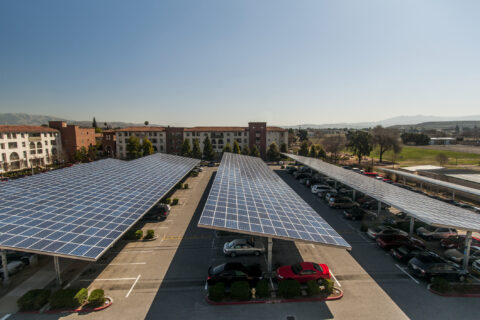On June 8th, City Council President Elaine Clegg of Boise, Idaho, testified on behalf of the National League of Cities (NLC) before the House Committee on Transportation and Infrastructure in a hearing on the staggering increase in road deaths. Last year, 42,915 Americans died in motor vehicle traffic crashes. This annual death toll represents the entire population of major cities like Burlington, VT, Jefferson City, MO, Woodbridge, VA, or Tigard, OR.
Council President Clegg serves as the Chair of NLC’s Transportation and Infrastructure Services Committee. You can watch a recording of Council President Clegg’s testimony here and read her full written testimony here.
Key Hearing Takeaways
Every Community is Impacted by Road Deaths
The reality in America right now is that no matter the size of your community or whether it is urban, suburban or rural, this persistent issue hits hard at home and in your Districts. So many communities are concerned – from Idaho’s communities to Doraville, GA, to Ferndale, MI, to Greenville, NC, to Culver City, CA – and taking action to set up plans and projects despite tough recovery budget cycles and difficult decisions.
Need to Focus on Pedestrians and Older Americans
We also know that pedestrians and older Americans are especially vulnerable and make up an outsized proportion of the yearly deaths with fatalities increasing at a rate of 13% to 17% of all deaths for pedestrians. The Governors Highway Safety Association believes this is the largest 3 number of pedestrian deaths in four decades. Fatalities among older Americans have increased 17% to nearly 20% of all deaths. Idaho had the most traffic deaths in 16 years in 2021, and one of the highest rates of increase in the nation at 36% a – that is three times the average rate of increase in other states.
Road Deaths are a Family Issue
As the U.S. Department of Transportation (USDOT) said so well, behind each of these numbers is a life tragically lost, and a family left behind. In Idaho, we take part in a memorial to line up shoes representing the pedestrians and bicyclists who have died in crashes in the last five years on the state capitol steps. At our ceremony each year, we hear from family members who have lost a loved one in one of these terrible crashes and learn about the personal human toll this takes on our families. There is the sad reality behind the numbers – like the mother who has raised her two daughters without their father after he was killed biking to work. These are stark reminders to double-down on what works and act to save lives today.
Solutions Start with Federal Changes to Safety Measures
Zero is the only acceptable number of deaths on America’s roads. Yet, many of the fundamental measures and guides of transportation are reasons that cities and towns cannot easily change our roads to be safer for everyone and reach this goal on our own. Collectively, federal, state and local governments must be willing to adjust our rules of the road for design and speed in order to save lives. Cities and towns have found that federal measures and designs rely too heavily on car throughput measures set during the era of freeway building to 4 keep single-purpose, high-speed, limited access roadways safe and moving. But no city or town is only a highway – Main Street America in cities small and large have a multitude of access points and users with a need to create safe and efficient access from their homes to their destinations. […]
Let’s Rebuild with Renewed Safety Goals
As we begin a great time of rebuilding America’s infrastructure, we need to work together to quickly adopt better measures and designs that can take into account more factors like speed, distance, impact on non-drivers, and time of travel. We believe that if we reset our goals and allow safety to be the primary measure, transportation engineers can modernize the foundational cost-benefit transportation measures and truly assess the costs America is now paying in lives. Growing communities like mine in Boise, Idaho, and smaller and rural communities I work with across the state and the country are ready to make the changes necessary to bring our road deaths down to zero, but we also realize we cannot do this alone. It will take action at the federal, state and local levels to reach this goal by removing barriers, changing the way we measure success, and inviting innovation where we have stagnated.”
Cities Leading the Street Safety Movement
Greensboro, NC – The City of Greensboro has joined with other cities across the nation in making transportation safety a top priority to end crashes resulting in serious injuries and loss of life. The City had experienced its highest number of traffic crash deaths in 2017, when 42 people were killed. This prompted the Greensboro Department of Transportation (GDOT) to initiate Vision Zero Greensboro. GDOT has focused extensively on education and encouragement.
Madison, WI – Madison’s Vision Zero Initiative, launched in the summer of 2020, is a data-driven strategy that unites City departments with the community. It is a comprehensive approach to transportation safety that includes smarter street designs that account for human error, education, safety-focused enforcement, safer vehicles and public engagement.
Bellevue, WA – City leaders are committed to making the transportation system safer and more equitable for all users — people who walk, roll, bicycle, drive and take transit. Bellevue is leading pedestrian interval upgrades for safer crosswalks, partnering with schools on road safety assessments, and measuring progress on vision safety goals.
Tacoma, WA – Tacoma is developing a Vision Zero Action Plan including recent crash data, equity indicators, and community involvement to determine the best solution that benefits all but especially the city’s more vulnerable users.










